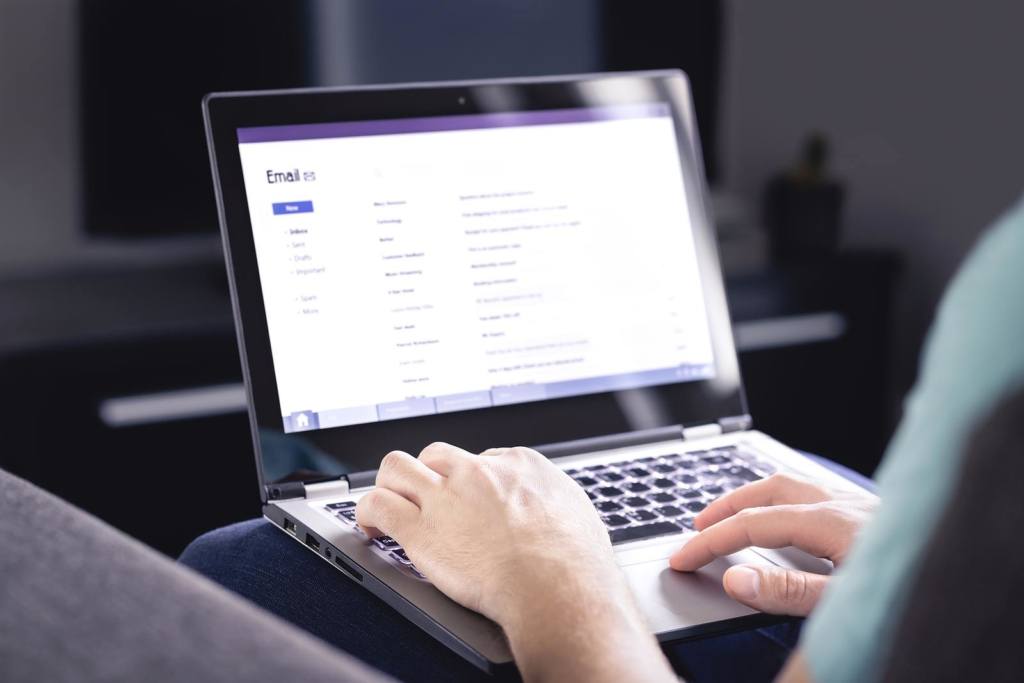In the digital world of today, many of us regularly send emails. They’re especially common in a post-pandemic world. With so many continuing to work from home, we communicate with our colleagues and clients via email more than ever. However, despite emailing being common practice, some of us are still unsure how to write a professional email.
It’s essential for us to email each of our connections in the right way to maintain working relationships, progress further in our careers, and guarantee a great day at work. But how do you craft the perfect professional email?
How to start a professional email
The subject line of your email should be clear and concise, succinctly conveying the purpose of your email. This is the case no matter who you are writing to. If it’s an update on a specific project, you could write “XXX update”. If it’s to organize a meeting, make that clear in the subject line.
No matter the purpose, length, or recipient of your email, you should always start with a greeting. You might be emailing a close colleague with whom you have a comfortable relationship. In this case, simply starting with “Hello” works well.
A common yet simple greeting is “Dear [NAME]”. If you speak with the contact regularly and know their first name, use it. The recipient will likely appreciate a friendly greeting. However, if you don’t know them personally, you should address them by their title and surname. This would read as “Dear Mr. Smith”.
How to write a professional email

Now you’re on to the body of your email. You should always consider the length, which will vary depending on the topic. Aim to keep emails as brief as possible while still including the essential information.
Avoid using emoticons like smiley faces. You should instead use your words to convey a pleasant tone. Try not to use too many exclamation marks either. Using too many can read as overly-enthusiastic or potentially aggressive in more complex conversations. Aim to keep the tone of your emails neutral with a touch of your professional charm for good measure.
You should also be aware of sentence length and language. If you’re emailing someone who works within the same industry and understands the jargon, you can confidently use the terminology. However, if there’s a chance they won’t understand a specific term, avoid using it. Aim to write in plain English, tailoring your email to the recipient’s understanding as needed, and keep sentences under 20 words on average.
Your email should explain why you are writing to the recipient and give them the essential details succinctly. It should also state if the purpose of the email requires further action or if it’s simply an update.
How to end a professional email
When emailing internal colleagues, you might feel comfortable getting the important bits in the body of the email and then quickly signing off with a simple “thanks”. However, your professional email should have a formal sign-off for most email audiences.
Your closing can be a single line that rounds up your email. Something like “thank you for your time” or “I look forward to hearing back from you when you have the chance” is pleasant and to the point. You could also sign off with a friendly line such as “have a great week” or “take care!” You’ll better understand your relationship with the recipient than anyone else, so you will know the best way to close your email.
Finish your email with your first name, at the very least. Unless you know the recipient well, sign off with your given name instead of a nickname. You may even choose to write your first and last name, especially if it’s your first time emailing the recipient.
A professional email signature is an excellent way to finish your emails. It should include your role, the place you work, further contact details, preferred pronouns, and any links to your professional portfolio or business website. An email signature is a final touch to show your professionalism.
Before you hit send, proofread your email. Ensure there are no spelling mistakes, the recipient’s name and information included are correct, and you’ve selected the right email address.
How to write a professional thank you email
A professional thank you email should use engaging and appreciative language to convey your sincere thanks appropriately. Explain why you are thanking the recipient and express your gratitude clearly.
Structurally, it should be similar to your other professional emails. The greeting and sign off should have the same tone you would usually send to this person.
How to write a professional apology email
Apology emails can be tricky, as you want to ensure the recipient truly understands that you are sorry without going overboard. Again, begin and end your email how you usually would with this person, but alter the main content appropriately. Reiterate why you apologise and tell the person what action you intend to take to ensure the situation won’t happen again.
How to write a professional condolences email
If a colleague, client, or customer is having a particularly hard time, sending a professional condolences email might be appropriate. This could be for a personal loss or a situation with their work.
Be aware the recipient might not want to go into detail on the situation. Simply expressing your condolences in a short email can still mean the world to them. Aim to write something heartfelt yet straightforward.
Professional email examples

Email to an internal colleague:
Hi [NAME],
I hope you had a nice holiday! Did you have a chance to eat at that restaurant in the end?
Once you have had the chance to settle back in, could you please send me an update on your chosen list of candidates for the executive role? I’d like to contact those we plan to invite for interviews on Wednesday, so it would be great to have that list by EOD Tuesday.
Thanks,
[NAME]
Email to a hiring manager:
Dear [TITLE & NAME]/[Hiring Manager],
I hope this email finds you well.
I am writing to express my interest in the Content Manager position advertised on your LinkedIn.
I have experience in writing a variety of online content types, including B2B and B2C copy for a range of industries. I am also well-versed in content strategy and management, having previously worked as the lead editor on several large accounts.
Due to my extensive experience and enthusiasm, I think I would be well-suited to this role. Please find attached my cover letter and CV, which give further detail about my professional experience.
Thank you for your consideration – I look forward to hearing from you soon.
Sincerely,
[NAME]
Email to offer thanks:
Dear [NAME],
I hope you are well.
I am writing to offer my thanks for your hard work on the recent project. Because of your efforts, we have seen incredible results. We are incredibly grateful to have had your expertise for this and are looking forward to working with you again in the future.
Thanks again,
[NAME]
Email to offer condolences:
Dear [NAME],
I wanted to send my condolences regarding your recent loss. I appreciate this must be a difficult time and I am deeply sorry. If there is anything I can do for you, please don’t hesitate to let me know.
Take care,
[NAME]
Email to expand professional network:
Dear [NAME]
To formally introduce myself, my name is [NAME] and I work as [POSITION] at [COMPANY].
I came across your work on LinkedIn and wanted to reach out to express my admiration for your professional skills and talent. Your work on [project] sparked a particular interest.
If you’re open to the idea, I’d love to connect and start a conversation to get to know each other.
I look forward to hearing from you.
Best wishes,
[NAME]
A professional worker like yourself deserves a professional yet comfortable place to live. Find homes for young professionals across Leeds through Pickard Properties so you can be well-rested to succeed in your career.

![[alt text]](https://pickardproperties.co.uk/wp-content/themes/pickard-properties/assets/dist/images/yorkshire-award.png)
![[alt text]](https://pickardproperties.co.uk/wp-content/themes/pickard-properties/assets/dist/images/insider-award.png)
![[alt text]](https://pickardproperties.co.uk/wp-content/themes/pickard-properties/assets/dist/images/labc-award.png)